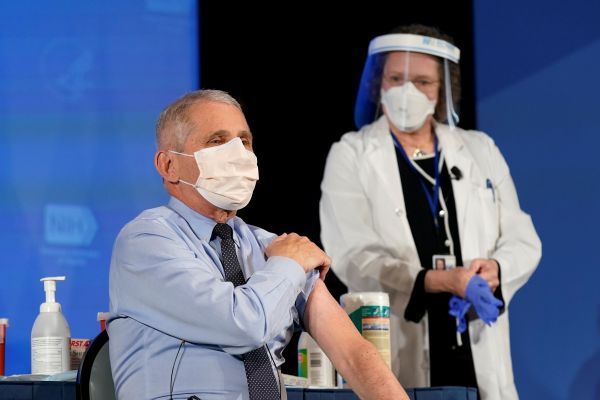According to comprehensive foreign media reports, the progress of vaccination in the United States is lagging behind, and millions of COVID-19 vaccines are not used in hospitals and other places in the United States, which raises doubts about the government’s target of vaccinating 20 million people this month.
As of the morning of the 23rd, only one million doses of Pfizer-Biotech have been vaccinated against the novel coronavirus, about one-third of the first vaccines sent last week.
More than 9.5 million doses of vaccine — including those from Moderna Corporation — have been distributed to states, according to the Centers for Disease Control and Prevention.
While hospitals have started offering Moderna vaccines, the Centers for Disease Control and Prevention has not yet reported data, and Pfizer and Moderna’s vaccine reports may be lagging behind.
From the first week, the slow pace has hardly accelerated. At that time, 614,000 doses of vaccine were vaccinated, but nearly 2.9 million doses were distributed.
The hospital said that the first batch of vaccinations began slowly from the 14th because they wanted to prepare frozen vaccines, find someone to manage vaccination clinics, and ensure proper social distancing before and after vaccination.
Some people say that they only got about 100 doses of the vaccine on the first day.
The Trump administration promised to vaccincinise 20 million people by the end of the year, but did not provide much money to achieve this goal.
That is to say, nearly 19 million doses are injected in nine days or more than 2 million people are inoculated a day, including Christmas.
“The promise we can make is to provide a dose of vaccine,” Monsef Slavy, the chief adviser to Operation Warp, said in a telephone interview.
He noted that getting people’s arms vaccinated “slower than we thought.”
Jason Schwartz, assistant professor of health policy at Yale School of Public Health, said the opening data was “demoralizing” and said that “the challenge of getting a vaccine to be shot as fast as we can make it.”
He said that models made by the hospital experts showed that it took 10 minutes to inject Pfizer’s COVID-19 vaccine, about two to three times the time of influenza vaccination, because the vaccine was frozen and required a disease thawing process.
Patients must maintain social distancing and be monitored for allergic reactions before and after vaccination.
The report pointed out that the United States will be vaccinated against 170 million doses of influenza every year in a few months, but due to the COVID-19 epidemic, the United States will have to inject most Americans three times that number by July next year.
At the current rate, the United States seems to be able to inject only one-third of the vaccine given a week, thus highlighting this gap.
The current coronavirus aid program of the U.S. Congress has set aside more than $8 billion for vaccine distribution, but the plan has been postponed.
“If you don’t know if you’re paid in January, you can’t hire and train people in December,” the experts said.
According to the AFP news agency, Redfield, director of the Centers for Disease Control and Prevention, said that since the launch of the largest immunization operation in U.S. history on December 14, more than 1 million people have been in the first dose of vaccines in various jurisdictions.
Monsef Slawi, the chief adviser to the government’s Operation Warp, said the goal of 20 million vaccines this month was “imply unlikely to be achieved.” He also said that due to frequent problems in the distribution of vaccines to the injection site, the injection began to be delayed.
But he is still confident that 100 million people will be able to complete vaccination in the first quarter of 2021 and another 100 million people in the second quarter.
Anthony Fauci, a top scientist, said that if the coronavirus vaccine is distributed smoothly, it will be possible for the United States to achieve widespread herd immunity by next summer.



